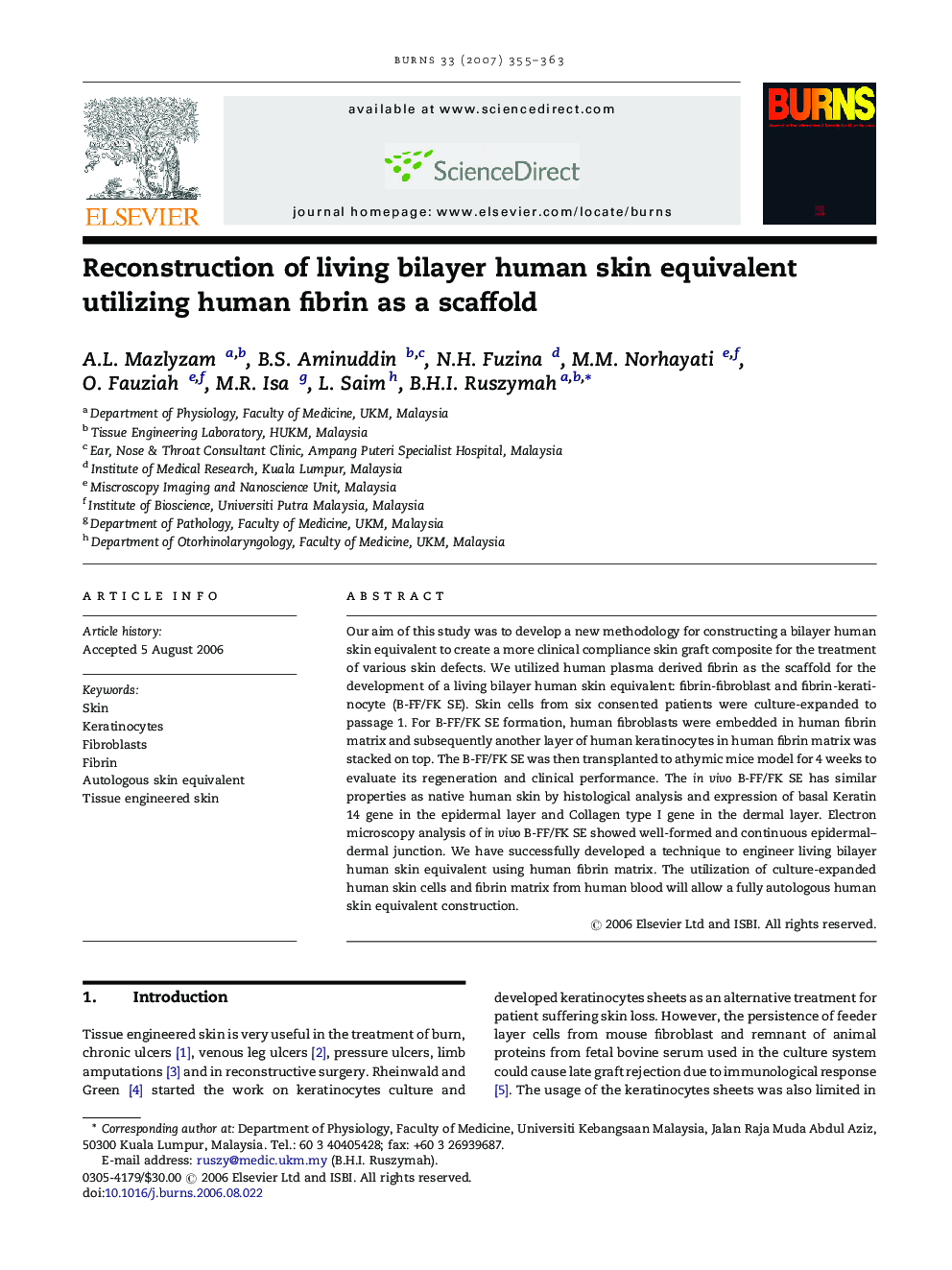| Article ID | Journal | Published Year | Pages | File Type |
|---|---|---|---|---|
| 3106688 | Burns | 2007 | 9 Pages |
Our aim of this study was to develop a new methodology for constructing a bilayer human skin equivalent to create a more clinical compliance skin graft composite for the treatment of various skin defects. We utilized human plasma derived fibrin as the scaffold for the development of a living bilayer human skin equivalent: fibrin-fibroblast and fibrin-keratinocyte (B-FF/FK SE). Skin cells from six consented patients were culture-expanded to passage 1. For B-FF/FK SE formation, human fibroblasts were embedded in human fibrin matrix and subsequently another layer of human keratinocytes in human fibrin matrix was stacked on top. The B-FF/FK SE was then transplanted to athymic mice model for 4 weeks to evaluate its regeneration and clinical performance. The in vivo B-FF/FK SE has similar properties as native human skin by histological analysis and expression of basal Keratin 14 gene in the epidermal layer and Collagen type I gene in the dermal layer. Electron microscopy analysis of in vivo B-FF/FK SE showed well-formed and continuous epidermal–dermal junction. We have successfully developed a technique to engineer living bilayer human skin equivalent using human fibrin matrix. The utilization of culture-expanded human skin cells and fibrin matrix from human blood will allow a fully autologous human skin equivalent construction.
